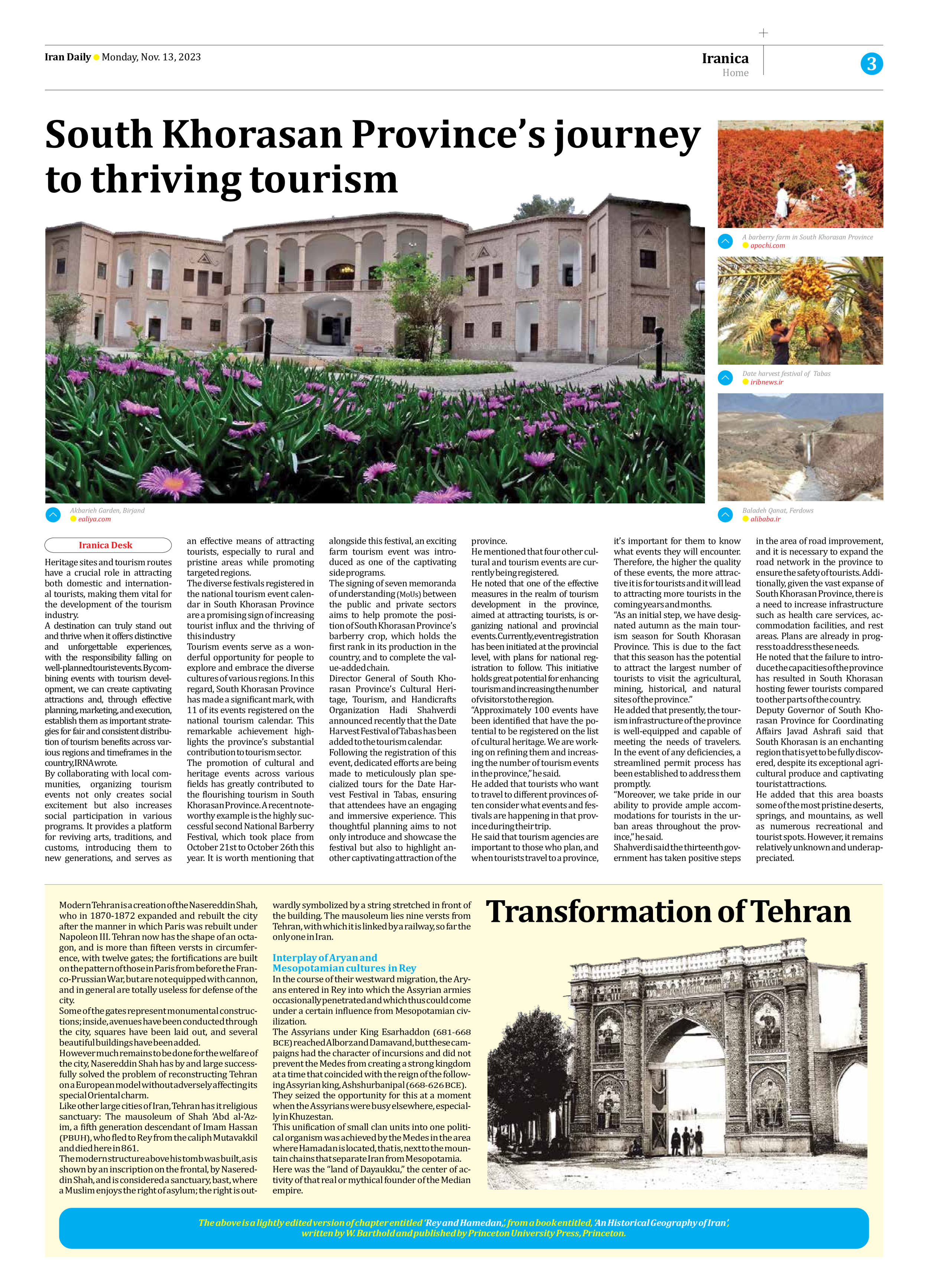
Transformation of Tehran
Modern Tehran is a creation of the Nasereddin Shah, who in 1870-1872 expanded and rebuilt the city after the manner in which Paris was rebuilt under Napoleon III. Tehran now has the shape of an octagon, and is more than fifteen versts in circumference, with twelve gates; the fortifications are built on the pattern of those in Paris from before the Franco-Prussian War, but are not equipped with cannon, and in general are totally useless for defense of the city.
Some of the gates represent monumental constructions; inside, avenues have been conducted through the city, squares have been laid out, and several beautiful buildings have been added.
However much remains to be done for the welfare of the city, Nasereddin Shah has by and large successfully solved the problem of reconstructing Tehran on a European model without adversely affecting its special Oriental charm.
Like other large cities of Iran, Tehran has it religious sanctuary: The mausoleum of Shah ‘Abd al-’Azim, a fifth generation descendant of Imam Hassan (PBUH), who fled to Rey from the caliph Mutavakkil and died here in 861.
The modern structure above his tomb was built, as is shown by an inscription on the frontal, by Nasereddin Shah, and is considered a sanctuary, bast, where a Muslim enjoys the right of asylum; the right is outwardly symbolized by a string stretched in front of the building. The mausoleum lies nine versts from Tehran, with which it is linked by a railway, so far the only one in Iran.
Interplay of Aryan and
Mesopotamian cultures in Rey
In the course of their westward migration, the Aryans entered in Rey into which the Assyrian armies occasionally penetrated and which thus could come under a certain influence from Mesopotamian civilization.
The Assyrians under King Esarhaddon (681-668 BCE) reached Alborz and Damavand, but these campaigns had the character of incursions and did not prevent the Medes from creating a strong kingdom at a time that coincided with the reign of the following Assyrian king, Ashshurbanipal (668-626 BCE).
They seized the opportunity for this at a moment when the Assyrians were busy elsewhere, especially in Khuzestan.
This unification of small clan units into one political organism was achieved by the Medes in the area where Hamadan is located, that is, next to the mountain chains that separate Iran from Mesopotamia.
Here was the “land of Dayaukku,” the center of activity of that real or mythical founder of the Median empire.
The above is a lightly edited version of chapter entitled ‘Rey and Hamedan,’, from a book entitled, ‘An Historical Geography of Iran’,
written by W. Barthold and published by Princeton University Press, Princeton.







